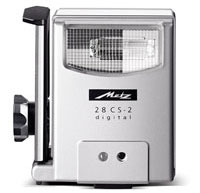 If you’re finding that the built-in flash on your compact camera has the illuminating power of a Woodbine in a gale force breeze, it might be worth investing in the Metz 28 CS-2 Digital slave flash.
If you’re finding that the built-in flash on your compact camera has the illuminating power of a Woodbine in a gale force breeze, it might be worth investing in the Metz 28 CS-2 Digital slave flash.
Designed to supplement the flash output of compact digital cameras, the flash is triggered by the user’s camera, and can be attached to the camera via a fold out bracket, held in the hand or placed wherever necessary.
Easy mode
Fiddling about with slave flashes can be a notoriously fiddly job, but Metz has done a good job of simplifying the process with an ingenious EASY mode.
Because some digital cameras fire one or more ‘preflashes’ a fraction of a second before the main flash fires (these are to help the camera measure the distance of the object in front of it and to adjust output accordingly), slave flashes can go off at the wrong time.
 To ensure that the Metz fires at the same time as the camera’s onboard flash, the unit can be put in a learning mode which calculates and stores the correct flash trigger.
To ensure that the Metz fires at the same time as the camera’s onboard flash, the unit can be put in a learning mode which calculates and stores the correct flash trigger.
Once set up, users can take shots with the slave flash, check out the result on the camera’s LCD screen and then adjust the output by bashing the + and – buttons on the back of the flash.
Slave mode
More advanced users can explore the Metz’s other modes which include slave modes with/without preflash suppression and auto/manual modes and partial light output options (from full to 1/4 power), while serious photographers can hook the CS-2 to a Metz multi-remote flash system.
Powered by regular AAA batteries, the unit also comes with two adapters which slip over the flash gun to provide optimised coverage for 24mm and 85mm focal ranges.
Testing the flash
We tried out the unit with our fave digital compact camera, the Ricoh GR Digital and were impressed with the results.
 It took a matter of seconds to ‘train’ the Metz to fire at the same time as the Ricoh’s onboard flash and we had no problems getting it to respond to each and every subsequent shot.
It took a matter of seconds to ‘train’ the Metz to fire at the same time as the Ricoh’s onboard flash and we had no problems getting it to respond to each and every subsequent shot.
Using the ‘-‘ button to reduce the output meant we were able to introduce controlled, handheld ‘fill in’ side lighting to our subject, and ramping it up to full gave us some much needed firepower at a live gig.
The flexibility of using a slave flash gun meant we were able to plonk the Metz on a speaker stack and supplement the flash output of the Ricoh at the gig, although you’ll get into trouble if there’s a paparazzi-pack swarming at the front as the CS-2 could be triggered by other flashguns.
Conclusion
We loved the added lighting options that the Metz Mecablitz 28 CS-2 offered, and its Easy mode lived up to its name, making it simple to get the flash working with our compact camera.
Although the combination of the Easy mode and the plus/minor power output buttons should be enough for most users, Metz has included enough advanced options to ensure that the flash can keep earning its place, even for high end users.
We liked the clever fold-out bracket, but thought it a shame that they couldn’t include a standard (non working) hotshoe too – being able to mount the slave on top of the camera would have been a nice touch.
Minor quibbles aside, this is a ‘must have’ accessory for photographers keen to make the most of their cameras. It’s compact, versatile, powerful and easy to use and well worth the £90 (approx) asking price.
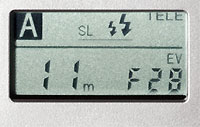 Rating
Rating
Ease of use: 85%
Build: 85%
Features: 85%
Value for money: 80%
Overall: 85%
Metz 28 CS-2
Metz Mecablitz 28 CS-2 specs
Guide numbers
ISO 100/21° (85mm) 28
ISO 100/21° (35mm) 22
ISO 100/21° (24mm) 16
Flash modes
Easy
Automatic A
Manual M
Metz Remote SL
Auto apertures: f1.4 – f16
Light sensitivity: ISO 50 – 3200
Power
Automatic cut-off
Rechargable battery
Alkaline mangan battery
Flash recovery time (in secs)
NiCd. min. 0.3
NiCd. max. 6
Alkaline mangan batteries min. 0.3
Alkaline mangan batteries max. 8
NiMH-rechargable max. 0.3
NiMH rechargable max. 6
Min. number of flashes @ full light output
NiCd rechargable 600 mAh 35
Alkaline Mangan battery 100
NiMH rechargable 1200 mAh 100
Weight without batteries:g 140
Dimensions 75.5 x 83 x 32.5
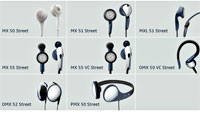 Those crazy hep cats at Sennheiser have launched a range of seven new economy-priced headphones aimed at da yoot.
Those crazy hep cats at Sennheiser have launched a range of seven new economy-priced headphones aimed at da yoot. 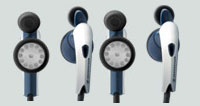 The next model up, the MXL 51 Street, is bundled with a lanyard and case for another fiver.
The next model up, the MXL 51 Street, is bundled with a lanyard and case for another fiver.  An old school neckband pair of cans, the PMX 50 Street ‘phones wrap up the new range and come with exchangeable design parts and retail for £25.
An old school neckband pair of cans, the PMX 50 Street ‘phones wrap up the new range and come with exchangeable design parts and retail for £25. 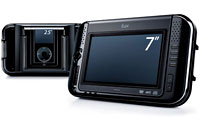 Now available for early Christmas shoppers is the rather curious iLuv i1055, a portable tablet-style DVD player with a built in 7-inch TFT LCD and twin 2 x 0.5W speakers.
Now available for early Christmas shoppers is the rather curious iLuv i1055, a portable tablet-style DVD player with a built in 7-inch TFT LCD and twin 2 x 0.5W speakers.  The media player comes in two colours (black and white, so you can match it to your iPod), while those with older 1st or 2nd-generation iPods can use a line-in jack on the back of the unit.
The media player comes in two colours (black and white, so you can match it to your iPod), while those with older 1st or 2nd-generation iPods can use a line-in jack on the back of the unit.  The iLuv i1055 can be powered by a 10V AC Power Adapter, 12V Cigarette Lighter Adapter or its built Ni-MH Rechargeable Battery, serving up a claimed 2.5 hours playing time (which means you may come unstuck if you’re trying to watch one of those ultra long arthouse movies).
The iLuv i1055 can be powered by a 10V AC Power Adapter, 12V Cigarette Lighter Adapter or its built Ni-MH Rechargeable Battery, serving up a claimed 2.5 hours playing time (which means you may come unstuck if you’re trying to watch one of those ultra long arthouse movies).  UK PC vendors Evesham have rolled out what they’re claiming is the smallest and lightest notebook on the market to feature an optical drive.
UK PC vendors Evesham have rolled out what they’re claiming is the smallest and lightest notebook on the market to feature an optical drive. 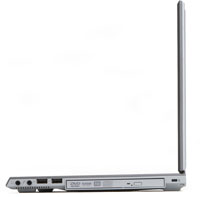 What makes this wee laptop unusual is the fact that Evesham’s engineers have managed to wedge in a DVD/CDRW/Dual Layer DVD-RW drive, instead of offering the usual external optical drive bundled with most small laptops.
What makes this wee laptop unusual is the fact that Evesham’s engineers have managed to wedge in a DVD/CDRW/Dual Layer DVD-RW drive, instead of offering the usual external optical drive bundled with most small laptops. 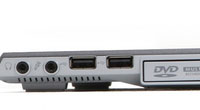 There’s also onboard audio and speakers and a battery life claimed at a healthy five hours, with an optional extended battery ramping uptime to a day-spanning ten hours.
There’s also onboard audio and speakers and a battery life claimed at a healthy five hours, with an optional extended battery ramping uptime to a day-spanning ten hours. 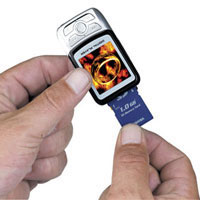 Smaller than a pixie’s pocket plaything, the ridiculously tiny Ultra Portable Personal Media Player and Recorder is quite the teensiest thing we’ve seen for a while.
Smaller than a pixie’s pocket plaything, the ridiculously tiny Ultra Portable Personal Media Player and Recorder is quite the teensiest thing we’ve seen for a while. 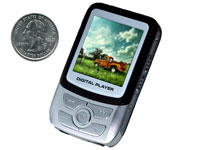 Lord knows how they’ve managed to fit it in, but there’s also a speaker onboard too, although we imagine the output must be quieter than a gnat having a snooze.
Lord knows how they’ve managed to fit it in, but there’s also a speaker onboard too, although we imagine the output must be quieter than a gnat having a snooze. 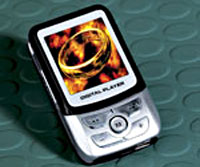 It’s as cheap as chips too, with Gadget Universe offering it for just $80 (£42, €62).
It’s as cheap as chips too, with Gadget Universe offering it for just $80 (£42, €62).  The US is responsible for a fifth of the world’s spam, according to security firm Sophos.
The US is responsible for a fifth of the world’s spam, according to security firm Sophos.  Most unsolicited emails are churned out by zombie PCs. These don’t walk towards you, arms outstretched and making funny groaning noises, but are computers that have been silently infected with Trojans, worms and viruses that turn your lovely PC into a spam-spewing beast.
Most unsolicited emails are churned out by zombie PCs. These don’t walk towards you, arms outstretched and making funny groaning noises, but are computers that have been silently infected with Trojans, worms and viruses that turn your lovely PC into a spam-spewing beast.  Google chief executive, Eric Schmidt, has chatted to Reuters about his thoughts on mobile phones, and how their ownership and usage should be free, supported of course by advertising. In his words “It just makes sense that subsidies should increase” as advertising rises on mobile phones.
Google chief executive, Eric Schmidt, has chatted to Reuters about his thoughts on mobile phones, and how their ownership and usage should be free, supported of course by advertising. In his words “It just makes sense that subsidies should increase” as advertising rises on mobile phones.  Google Maps for Mobile now officially supports GPS location information when used with mobile phones … well at least one of them at the moment, the Helio Drift.
Google Maps for Mobile now officially supports GPS location information when used with mobile phones … well at least one of them at the moment, the Helio Drift.  A UK company specialising in waterproof bags, OverBoard, have widened their selection of waterproof cases to include electronic gear.
A UK company specialising in waterproof bags, OverBoard, have widened their selection of waterproof cases to include electronic gear.  Not content with just providing their leisure range, they’ve decided to tackle the design problem of a waterproof iPod case for extreme water sports, a range they call pro-Sports. Not only are they more rugged, but float, so your rather expensive music player doesn’t start playing its tunes to the fishes.
Not content with just providing their leisure range, they’ve decided to tackle the design problem of a waterproof iPod case for extreme water sports, a range they call pro-Sports. Not only are they more rugged, but float, so your rather expensive music player doesn’t start playing its tunes to the fishes. 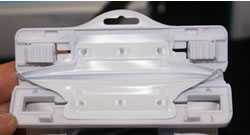 The time I had with it gave me the impression that the case is very tough. There’s two leads supplied, a neoprene velcro sports arm strap (for attaching to your arm – in the photo) and a safety break neck lanyard.
The time I had with it gave me the impression that the case is very tough. There’s two leads supplied, a neoprene velcro sports arm strap (for attaching to your arm – in the photo) and a safety break neck lanyard. 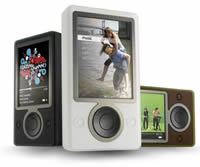 Microsoft is giving the Universal Music Group (UMG) a per-unit fee for each Zune that they sell, in addition to the money that they’ll make out sell music tracks on it too.
Microsoft is giving the Universal Music Group (UMG) a per-unit fee for each Zune that they sell, in addition to the money that they’ll make out sell music tracks on it too.  If you’re finding that the built-in flash on your compact camera has the illuminating power of a Woodbine in a gale force breeze, it might be worth investing in the Metz 28 CS-2 Digital slave flash.
If you’re finding that the built-in flash on your compact camera has the illuminating power of a Woodbine in a gale force breeze, it might be worth investing in the Metz 28 CS-2 Digital slave flash.  To ensure that the Metz fires at the same time as the camera’s onboard flash, the unit can be put in a learning mode which calculates and stores the correct flash trigger.
To ensure that the Metz fires at the same time as the camera’s onboard flash, the unit can be put in a learning mode which calculates and stores the correct flash trigger.  It took a matter of seconds to ‘train’ the Metz to fire at the same time as the Ricoh’s onboard flash and we had no problems getting it to respond to each and every subsequent shot.
It took a matter of seconds to ‘train’ the Metz to fire at the same time as the Ricoh’s onboard flash and we had no problems getting it to respond to each and every subsequent shot.  Rating
Rating